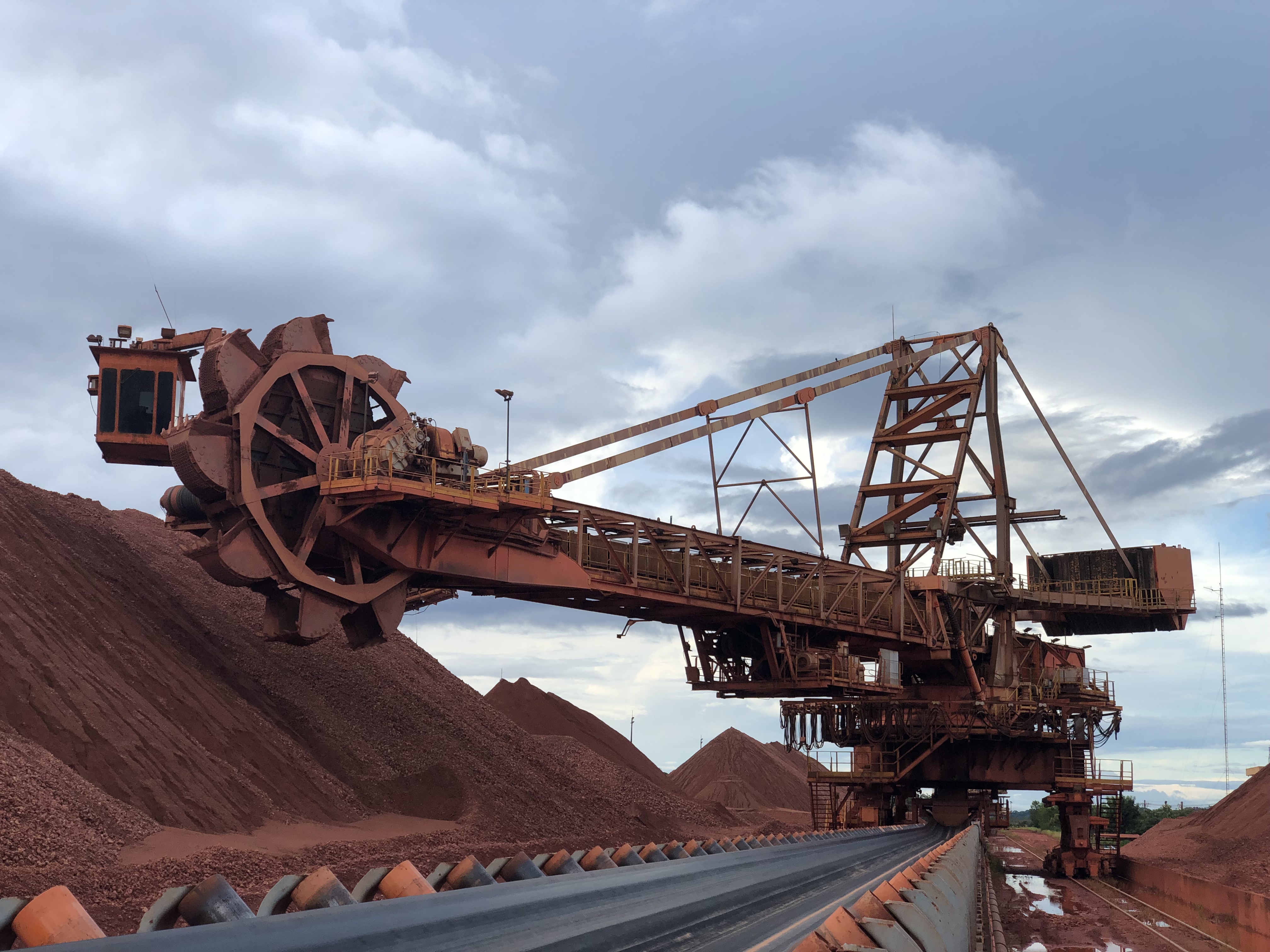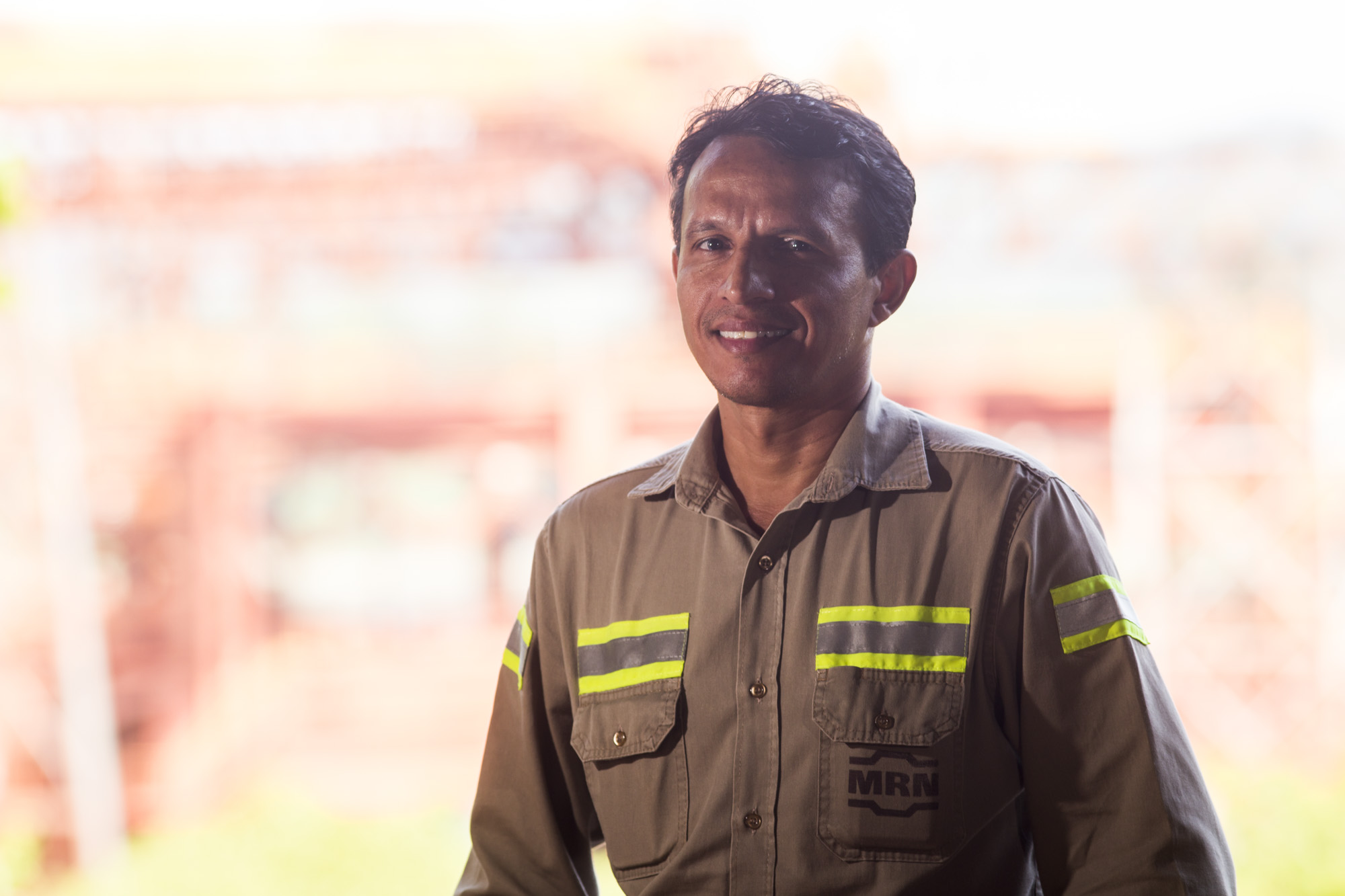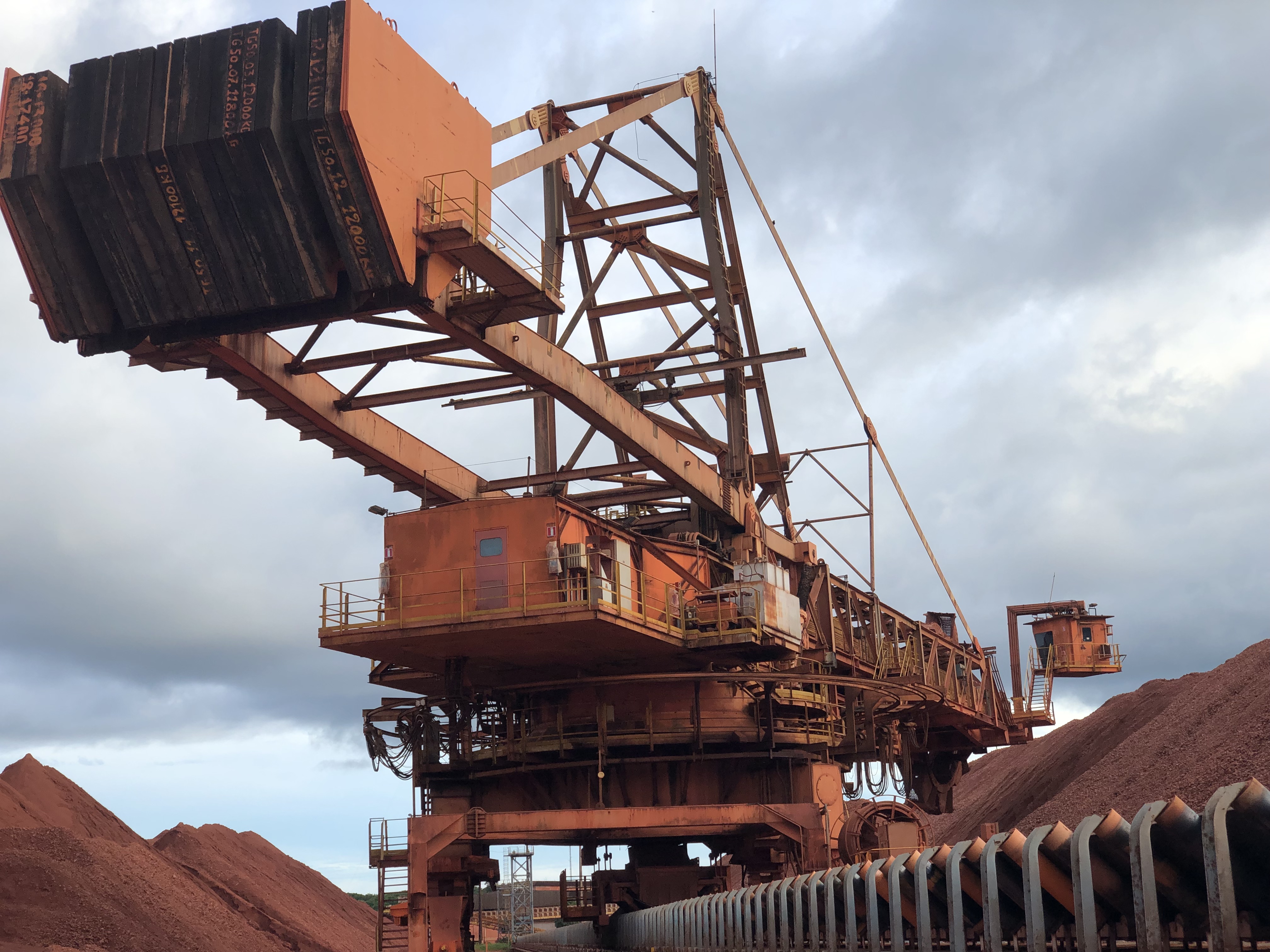During the planned downtime, the mining company would use an alternative loading system; but its use could not be extended for very long without significantly impacting production. If the maintenance went over the time allotted, production shortfalls could result, so rapid action was required.
Smart planning guaranteed that the repair was completed safely and on time
“Our initial plan involved a nine-day stoppage that could be extended to 14 days,” Marinho explains. “When we dismantled the counterbalance and noticed that other repairs needed to be done, there was action taken on the part of Metso, including relocating other professionals from Sorocaba (SP) to Porto Trombetas (PA) which kept us on schedule,” he adds.
Diego Polaz Mateus, Maintenance Engineer of the Services area of Metso, was directly involved in the repair of the reclaimer and points to the safety of the process as critical “It is high-risk maintenance. If badly planned, it could put the lives of the professionals, the equipment and the production of MRN at risk,” he highlights. According to him, the scope of the repair included the substitution of the pins of the main articulations, the lower pins of the mast, and the tilting cylinders of the reclaimer. “The rapid action in relation to the on-site circumstances guaranteed the success of the procedure and compliance with the schedule,” he concludes.
Danilo Caserta and Augusto Alves, Product Support Engineers at Metso Brazil, were involved on two critical work fronts. The first was to work with vendors quickly to obtain the parts needed for the field intervention. In parallel it was necessary to work on the component replacement procedures along with structural and mechanical engineering, in order to ensure the integrity of the equipment and the people involved in the parts replacement.Marinho also emphasizes that the partnership between MRN and Metso is fundamental for the company. It allows them to consult Metso if maintenance is required on any of their other three reclaimers, two of which are located in the processing plant and one at the port (for shipping).
"The crucial step in this process was the technical definition of the solution needed to solve the problem. We acted quickly and in an integrated manner to identify the problem, its cause, operational impacts and a better alternative solution. It was necessary to act quickly to identify necessary parts to be replaced, seeking for the shortest possible lead time to reestablish the safe operation of the equipment involved. "Concludes Danilo and Augusto.



